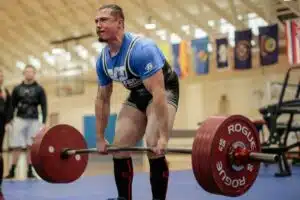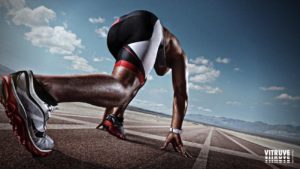What are the Velocity Zones of VBT Training?
Specific velocity zones of VBT Training for strength and conditioning is recognized as an effective method of velocity-based training that improves your performance, as it often results in increased muscle strength, hypertrophy, power output, velocity, and local muscular endurance. Regarding strength training, we are concerned with the control of two variables specifically, intensity and volume (4).
Velocity-based training has become a form of training widely practiced by professional and amateur athletes. The advancement of certain technologies such as linear encoders such as Vitruve has allowed everyone who trains to know at what speed they should move the load and when they should finish the series of exercises. This new training system has (partly) left behind the training planning based on the percentage of the maximum repetition (RM).
For years and years, and even now, we continue to study what is the best way to quantify the training load and to know how to give our athletes the necessary dose of exercise to improve their personal bests or to achieve the established objectives. And in this sense, a few years ago some researchers wondered if there was a relationship between strength and velocity of execution and they saw that the strongest people were able to move the training loads at a higher velocity, so the speed of execution is an indication of the force being applied. Depending on the force exerted, there are different velocity zones. Let’s say that the speed zones determine the effort that is being made. Therefore, we can say that Velocity Based Training (VBT) can be a good way of programming training.
The intensity variable as the maximum load
Historically, the intensity variable has been represented by the percentage of 1RM (%1RM) or the maximum load that can be lifted for a specific number of repetitions in each set (e.g., 5RM, 10RM). Although this method seems to have some drawbacks. As an alternative, recently, the use of execution velocity as an indicator of relative load during exercise has been proposed. In recent research, significant relationships between execution velocity and %1RM have been found for exercises such as the bench press and squat (1).
The velocity zones of execution is different for each exercise
It should be known that each exercise has a specific 1RM velocity, and consequently it is also specific for each XRM or %RM. The following table shows the specific velocities for the bench press, pull-up, squat and lying down row.
Table 2 Mean propulsive velocity zones (m.s-1) with each percentage of RM in four exercises with different 1RM velocities (3,4,5). Strength And Conditioning. Velocity Zones
That said, we know that each %1RM has its own velocity zone and that it is also specific to each exercise. The effort represented by each relative load (%1RM; first repetition velocity) is different according to the exercises (and is related to the velocity of your 1RM): training with the same relative load will have different effects depending on the exercises. This way, control of the execution velocity allows you to know with high precision that we are training with the relative load and allows you to estimate the performance improvement without the need to carry out additional tests (e.g., the 1RM test) (11).
The effort represented by each relative load (%1RM; first repetition velocity) is different according to the exercises (and is related to the velocity of your 1RM): training with the same relative load will have different effects depending on the exercises.
Having said all the above, it is important to understand that only the propulsive phase of the concentric action velocity needs to be considered for strength training load programming. The higher the velocity in a concentric action, the shorter the travel of the concentric phase and the greater the braking phase (in other words, the deceleration). If not, only the propulsive phase is considered, but the total phase (propulsive + braking), the strongest subjects are impaired when compared to the weakest. That said, with percentages greater than 80% of the 1MR, the total duration of the concentric phase is propulsive, so correct measurements will be presented using either of the two measurements (2).
What are Velocity Training Zones?
The velocity training zones are the target areas of velocity ranges where the workout will be performed for maximum results. We have different types of strengths used depending on the velocity.
Absolute strength
When we perform a sports gesture with a very high load, that is, when the force is very high, the velocity is going to be low. That is, when we are going to move a very heavy load (let’s put 200 kg in a squat) it is normal that we make that repetition very slowly. In our linear encoder we will see speeds around 0.4-0.6 m/s.
Force velocity
When we reduce the weight of the bar (let’s put a weight for the same person who moves 200 kg, of 100 kg) we would see that the velocity of execution increases. The force to be applied is medium and therefore the velocity will also be medium. In this sense, our encoder will give us a speed between 0.6 and 0.85 approximately.
Getting started with velocity training
Finally, when the load we have to move is low, that means we can move it at high velocity. For example, following the same model, let’s imagine that we put a load of 60 kg for the person who has lifted 200 kg. The logical thing would be that this person moves it at a high velocity and we see speeds between 0.9 and 1.1 in the linear encoder. These speeds are used to familiarize novices with this type of training.
How Velocity is related to Force
Let’s say that these 3 training zones are the most common to work on and that depending on our objective as coaches, we will direct our programming to one type of training or another. The sports modality and the sports gesture will mark the type of training that we carry out. For example, for a powerlifter it would not be interesting to work with low loads and high speeds, but it would be interesting for a javelin thrower.
As we have been able to verify both in the force-velocity curve and in the force expression, there is an intrinsic relationship between velocity of execution and force. However, we must pay attention to other variables such as technique or training load if we want to prosper in training.
Classification of different Velocity Zones
Bryan Mann et al., Have proposed a classification of different velocity zones depending on the velocity of execution of the movement. According to Mann, controlling the velocity load allows us to develop the desired training goal. He classifies execution velocity into the following zones: absolute strength, strength-velocity, velocity-strength, and initial velocity (12).
- Absolute strength can be monitored using average velocity, since average velocity and %1RM are directly related. Using the average velocity lets you know that the athlete is moving the appropriate load for absolute strength training for that day. Using the specific 100% 1RM velocities for each exercise, the trainer ensures that the athlete is training at an appropriate load to maximize absolute strength (6).
- Strength-velocity can be described as the act of moving a moderate load at a moderate velocity.
- Velocity-strength can be described as the act of mobilizing a lighter load at a high velocity and training in this zone aims to improve explosive strength (rate of force development) (6).
- Starting Strength velocity is the ability to overcome inertia quickly. It is developed using extremely light loads moved at very high velocities (6).
Table 3 Velocity zones according to Mann, B., et al. Strength and Conditioning.
Comparison with Conventional Training
In addition, the planning of training carried out through the percentage of the RM has certain limitations and we are going to mention some of them:
- It is very difficult to do an RM test in all the exercises and it would take a lot of time. Almost always it is usual to choose to do an RM test in the most basic exercises (Bench Press, Squat, Deadlift, Military Press) but we would not do an RM test with all the exercises of our planning (imagine doing a RM test of incline press, decline press, cable crossover, dumbbell press, Peck-Deck machine, etc. with all muscle groups.
- RM calculations often come from interpolated data. That is, we do a test, we see the kg that we have used, and we estimate the 1RM through some equation. Although, we can try to do that single repetition, but it is a risk if we do not have a good technique, if we have accumulated fatigue from previous tests, etc.
- The RM can vary throughout the days due to personal circumstances (less sleep, more stress at work, the time of day it was calculated and the time of day of training, our own intrinsic motivation, etc.) and this means that our planning is not as tight as possible.
That said, we know that MR-based programming can fail over time, although it is also true that we cannot demonize it since it has served all kinds of athletes for many years. However, a recent study comparing the two types of programming showed that velocity-based training seemed to offer better results compared to programming based on percentage of RM (1).
The acceleration of force and its effects
Velocity-based training may not only be another form of programming that results in better sports results, it also appears to offer certain benefits over percentage-based training. One of the main characteristics of velocity-based training is that it provides immediate feedback on the speed of execution (it is an option that can be chosen on the Vitruve device) and, therefore, can motivate or help the athlete in each repetition.
One of the main characteristics of velocity-based training is that it provides immediate feedback on the speed of execution (it is an option that can be chosen on the Vitruve device) and, therefore, can motivate or help the athlete in each repetition.
In fact, there are already studies that have analyzed the effect of this momentary feedback and have seen that it can help improve performance (2). This does not mean that we have to opt for a single programming model. We believe that the most interesting thing is that the coach carries out the programming that he considers appropriate but that he accompanies the training with a measurement of the speed to be able to make decisions in the moment and know if he should increase the load by X% or maintain it.
The force-velocity curve
We already know that depending on the force that is exerted, the velocity of execution will be different. Strength is a physical condition that is characterized by being divided into different types of strength. We cannot talk about strength in general, but we must talk about maximum strength, endurance strength, maximum isometric strength, reactive strength, etc. and in this sense each type of force is related to a different speed zone. Next, we can see the force-velocity curve that gives us an idea of the force distribution:
Steps to increase Velocity of Execution
It is important to keep in mind that the numbers quoted above are mere approximations of an exercise, in this case the squat, but that they are not applicable to all muscle groups. For example, when we go to another exercise such as the squat or deadlift, these values would change. Although it is true that the variations would not be on a large scale, but we have to take into account that the muscle groups are different and that there may be differences between them.
Even a study published in 2018 carried out by researchers from the University of Granada showed that in the different variants of the bench press there may be differences when making the speed strength profile (3).
Performance Assessment
The improvement of maximum strength implies an application of greater strength before the same resistance, or, in other words, a greater velocity of execution before the same load. If the resistances vary, it means applying more strength in the same amount of time or at the same velocity (considering that the load must be greater than the previous one displaced in the same amount of time), or the same amount of strength in less time or higher velocity (the load must be less than the previous one) (2).
All this can be seen reflected in the displacement of the strength-time curve to the left and upwards and of the strength-velocity curve to the right and upwards (figure 2).
Figure 2 strength-time and strength-velocity curve (10).
The key aspect of velocity zones training is to differentiate between normal variations in velocity between sessions and legitimate fluctuations in velocity due to physiological adaptations. This difference is critical in decision-making regarding the modification of the load so that in this way the subject can continue to improve his strength (11).
The reliability of test results is influenced by measurement error and normal variation within the biological systems of the body. A useful metric to quantify the reliability of performance is the standard (typical) error within the athlete (SE). This can be estimated from a group-based test-retest reliability study or from the trend in an athlete’s individual test performance repeated over a theoretically stable period (e.g., days, weeks, months). (11). You learn on how to make your own force-velocity profile here.
To know how important a change may be, coaches must decide on a threshold for a decisive change and evaluate changes based on this value (11).
Figure 3. Mean concentric velocity (MCV) of the 100 kg barbell back squat warm-up sets during a 17-week training phase of a weightlifter. Data show standard error of performance derived from maintenance phase trend (i.e. baseline; straight red line, weeks 1-10) (8)
Preparation of the measurement with the Vitruve encoder
From the Vitruve blog, we recommend that you use the linear encoder in each of the exercises that you are going to do with your starting strength and reach with the athlete the velocity at which they feel comfortable and that you make to try the speeds that are more interesting.
Start with basic exercises like squats, deadlifts, or bench presses and work your way up through these exercises. The most important thing is to know the technique well and start by increasing the velocity of execution with low loads. Do not make the mistake of starting to measure your speed with complex exercises or with very high loads. We recommend that a good way to measure your velocity strength curve is to perform 3 sets of 5 repetitions with 30%, 50% and 70% of your theoretical or approximate RM. In this way you will have speeds between 1.00 and 1.20 for low load, 0.75 and 1.00 for medium load and 0.45 and 0.75 for high load.
How to set your specific training zones with the Vitruve app?
We know that one of the things you most need to know is what your velocity strength curve is and what zones you are in in each workout. For this we have developed a tutorial that you can see on YouTube on how to do it with your app. The process is very simple, you can follow the tutorial in this video.
How to read and understand your results?
Once we finish the series or the training, we have all the results saved in the application.
Here we have an example of a training session carried out by an athlete. The application offers the result of the average velocity (m/s), the maximum speed (m/s), the power (Watts), the range of movement (ROM) and the estimation of the 1 RM. In this series we can confirm that this person is doing work at high speeds with a load that is not very heavy, and we see that he has consistency in movement since the ROMs in centimeters are very similar.
It is very common that as the load is automatically increased, the person automatically reduces the ROM due to accumulated fatigue. We must be very insistent with our athletes so that they perform the entire ROM, and we can take into account the velocity of execution. As we can see, the person moves between 0.82 m/s and 0.90 m/s, a very similar speed in all executions.

Conclusion
In conclusion, we want to remember that when lighter loads are used, the execution velocity increases while when we use higher loads, this speed decreases. Of course, it should be noted that the execution technique prevails first to avoid any type of injury and progressive overload. Remember that:
- The velocity strength profile is different in each athlete, measure it.
- Configure your app to be able to have the profile of each athlete.
- Start by measuring the velocity of execution in simple exercises and progress.
- Before speed, execution technique prevails.
If you want to know more about velocity-based training, be sure to check out our blog and remember: “Velocity-based training is a variant that you can use in your workouts, incorporate it to give your training and your athlete a little something extra.”
Unai Adrián Perez de Arrilucea Le Floc’h and Amber de Kroes
References
- Dorrell HF, Smith MF, Gee TI. Comparison of velocity-based and traditional percentage-based loading methods on maximal strength and power adaptations. The Journal of Strength & Conditioning Research. 2020;34(1):46-53.
- Argus C, Gill N, Keogh J, Hopkins W, editors. Acute effects of verbal feedback on explosive upper-body performance in elite athletes. ISBS-Conference Proceedings Archive; 2010.
- García-Ramos A, Pestaña-Melero FL, Pérez-Castilla A, Rojas FJ, Haff GG. Differences in the Load-Velocity Profile Between Four Bench Press Variants. International Journal of Sports Physiology and Performance.
- Sanchez-Moreno, M., Rodríguez-Rosell, D., Pareja-Blanco, F., Mora-Custodio, R., González-Badillo, J.,J. (2017). Movement velocity as indicator of relative intensity and level of effort attained during the set in pull-up exercise, International Journal of Sports Physiology and Performance.
- González-Badillo, J., J., Heredia-Elvar, J., R., García-Orea, G., P. (2016). Actualización de los criterios básicos para el entrenamiento de la fuerza en el ámbito de la salud, international journal of physical exercise and health science for trainers
- Badillo, J., J., Sánchez-Medina, L. (2010) Importance of the propulsive phase in strength assessment, International journal of sports medicine, 3, 123-129
- Pareja-Blanco, F., Rodríguez-Roswell D, Sánchez.Medina L, Gorostiaga, E. M., González-Badillo, J., J. (2014). Effect of movement velocity during resistance training on neuromuscular performance. International Journal of Sports Medicine, 35, 916-924
- Sánchez-Medina, L., Pallarés, J. G., Pérez, C. E., Morán-Navarro, R., & González-Badillo, J. J. (2017). Estimation of Relative Load From Bar Velocity in the Full Back Squat Exercise. Sports medicine international open, 1(2), 80–88.
- Mann, Bryan & Ivey, Patrick & Sayers, Stephen. (2015). Velocity-Based Training in Football. Strength and Conditioning Journal. 37. 52-57.
- González-Badillo, J. J. & Gorostiaga, E. G. (1995). Fundamentos del entrenamiento de la fuerza. Aplicación al alto rendimiento deportivo. Barcelona: INDE.
- Weakley, J., Mann, B., Banyard, H., McLaren, S., Scott, T., & Garcia-Ramos, A. (2020). Velocity-based training: From theory to application. Strength Cond. J, 1-19.











